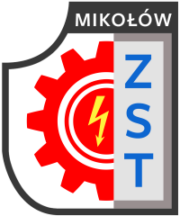The School’s Characteristics
The Complex of Technical Schools in Mikołów is one of the biggest schools in Silesia preparing young people to work in different vocations. Our graduates start their career path successfully at a vocational and technical level or they continue their education at various universities. Every year we teach almost 800 students in innovative fields of technical education. The young students living in our region are offered an extensive range of educational options, a modern teaching base as well as well qualified teachers which enable them to meet the current needs of the local job market. Every year over 100 graduates finish their education successfully in nine types of schools. Our school cooperates with big and small firms in the region as well as with state and private firms which makes it possible not only to prepare a rich educational offer but also to provide our students with attractive places to hold their professional practice in vocationa l and technical fields of education. The school has been continuing its cooperation with other vocational schools and colleges for many years as well. Thanks to the fact that the school is involved in many EU educational programs we cooper ate with schools and workplaces in many countries of the European Union which allows our students to get to know foreign job markets.
The Managing Board
Headmaster:
- mgr Elżbieta Jabłońska, e-mail: ejablonska@zst.edu.pl
Headmaster’s Assistant:
- mgr Róża Włodarz, e-mail: rwlodarz@zst.edu.pl
- mgr inż. Marek Olsza, e-mail: molsza@zst.edu.pl
School Workshop’s Director:
- mgr inż. Krzysztof Król, e-mail: kkrol@zst.edu.pl
Vocational Training Director:
- mgr Artur Opoka, e-mail: aopoka@zst.edu.pl
Director Of Technological-Training Centre:
- mgr inż. Krzysztof Król, e-mail: kkrol@zst.edu.pl
The Employment Opportunities Of Our Graduates
The Silesian economic area is characterized by a large number of industrial companies involving mechanical, electrical, mechatronic, automotive and information technology. Therefore there is an increasing demand of the job market for specialists in these fields – our task and goal is to prepare our students to meet the demand. The school’s broad teaching base enables to prepare professionals who after graduation are able to demonstrate both their theoretical and practical knowledge. The other advantage is the wide range of professional practice for our students. Our graduates work as, among other things:
- IT specialists
- electricians
- commerce technicians
- advertising specialists
- mechatronic technicians
- car mechanics
- mechanicians
The School’s Offer Includes
Five-year technical schools for:
- IT specialists
- programmers
- electricians
- commerce technicians
- economists technicians
- advertising specialists
- mechatronic and technicians mechanicians
- robotics technicians
- car mechanics
Three-year vocational schools for:
- car mechanics
- car electromechanics
- machine tool operators
- other types of vocations e.g. hairdressers, cooks etc. (a multivocational class)
Vocational courses:
- Currently we are offering vocational courses for car electromechanics.
Our Region
Mikołów
Mikołów is a city of 39.000 inhabitants which is situated on a Silesian plateau, near Katowice, at the crossing of two important communication routes: Katowice-Pszczyna and Gliwice-Oświęcim. It has been functioning as a county city since 1999. Mikołów is one of the oldest cities in Upper Silesia which lies on the old route leading from Cracow to Wrocław. The earliest mention is from the year 1222. However, it is believed that the city is older. In the thirteenth century Mikołów was a fortress but then it lost its position to the castle in Pszczyna. Under the regulation of Ferdinand II from 1545, the city received the right to organize fairs and markets and the tradition has been cultivated since then. Municipal rights were given to Mikołów in 1547 by Jan Turzo who was its owner at the time. The flowering of the city became possible thanks to the city’s good location on the busiest trade route. Over time rulers of Silesia and the owners of Mikołów were changing: after the Silesian Piasts came the Czechs, then the Austrians and the Prussians. In the nineteenth century Mikołów became a famous center of Polish publishing movement. In 1845 the first Polish printing house in Upper Silesia was opened here and a Silesian activist Karol Miarka joined the city. After World War I Mikołów together with a part of Upper Silesia became a part of Poland.
